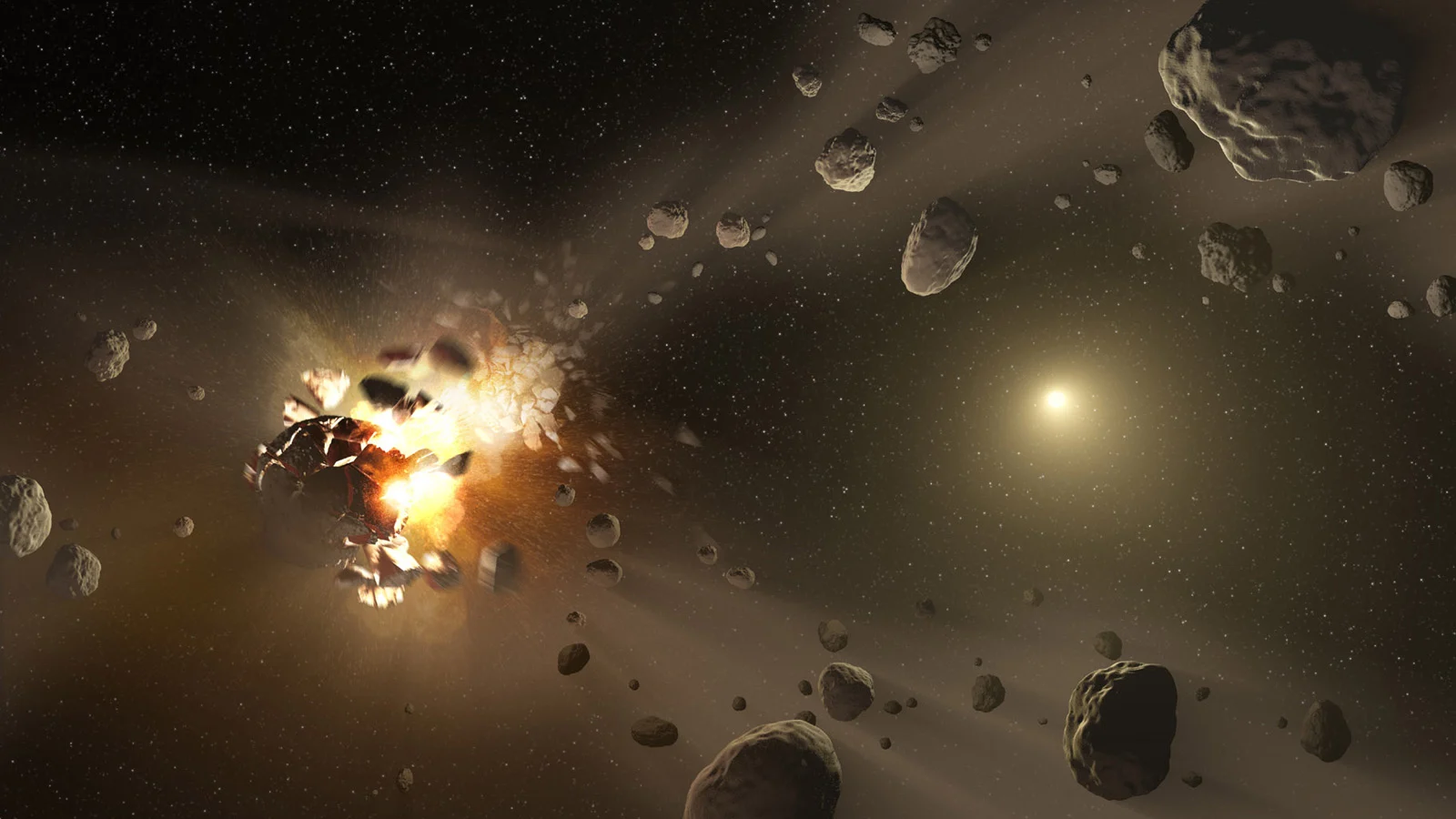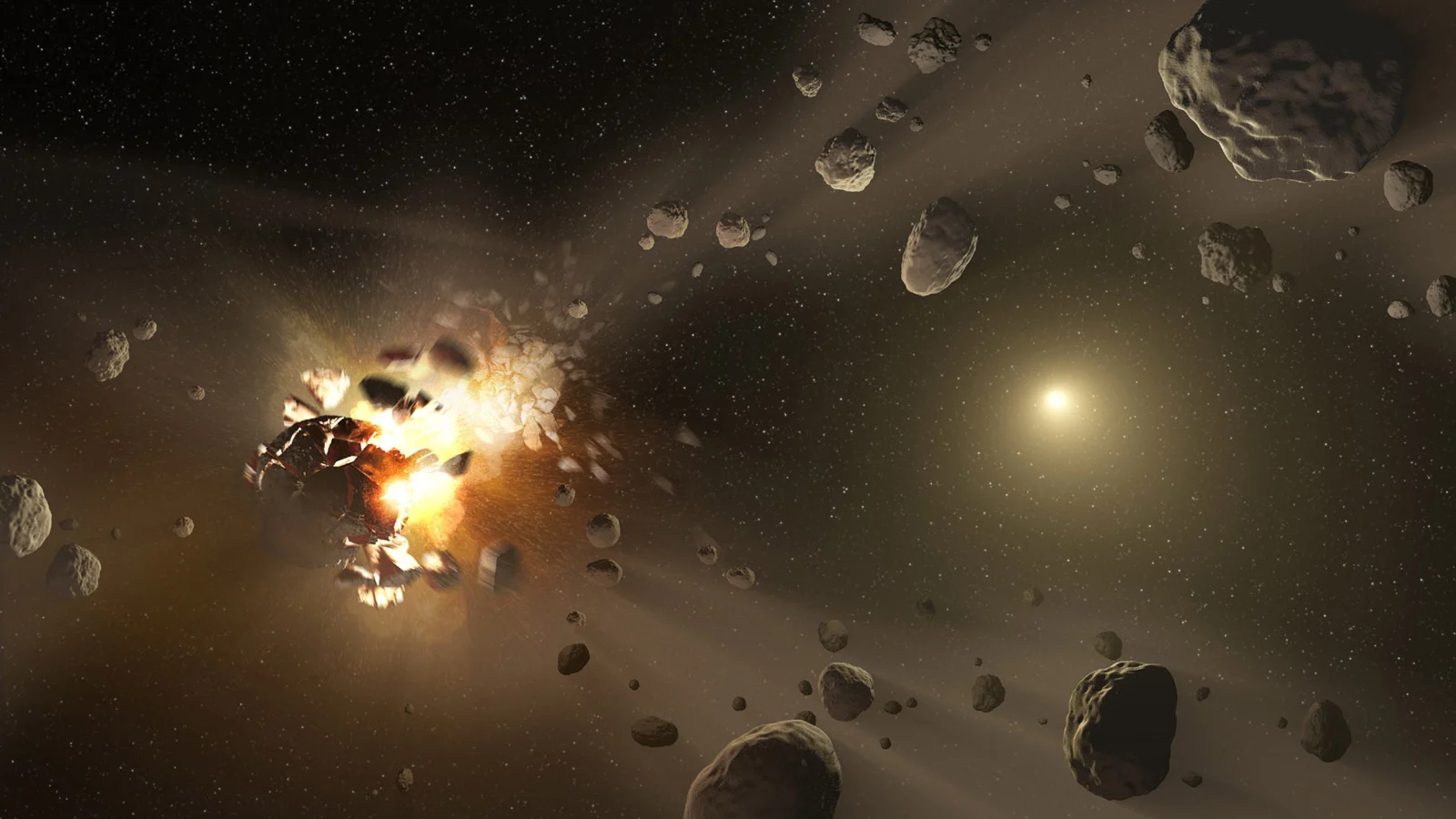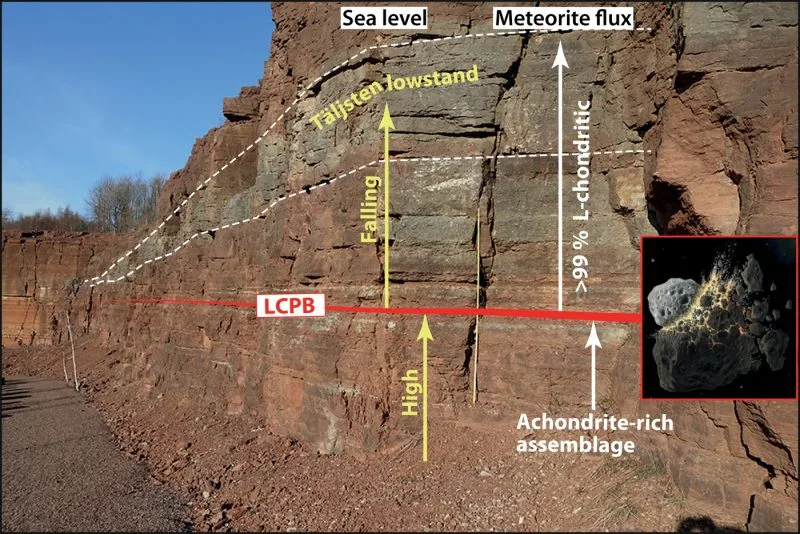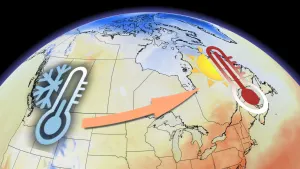
Ancient asteroid smash-up may have touched off an ice age here on Earth
Snowball Earth may have been caused by a collision in space
Looking back into Earth's distant past offers a mystery. Roughly 466 million years ago, Earth was in the midst of a global ice age, but there has been little to go on for what may have caused the planet to freeze over at that time.
Scientists may now have figured this out, and their answer originates from space.
In a new paper, published on Wednesday, an international team of scientists show that a vast quantity of dust rained down on Earth, likely originating from two asteroids colliding with each other out in space, and this dust cooled the planet.
"Our hypothesis is that the large amounts of extraterrestrial dust over a timeframe of at least two million years played an important role in changing the climate on Earth, contributing to cooling," says study co-author Philipp Heck, a curator at the Field Museum of Natural History, and associate professor at the University of Chicago.
What their study points to is a cataclysmic impact that took place in the asteroid belt between Mars and Jupiter, where a roughly 150 km wide asteroid shattered, probably by smashing together with another object.

This artist's conception shows how families of asteroids are created. Over the history of our solar system, catastrophic collisions between asteroids located in the belt between Mars and Jupiter have formed families of objects on similar orbits around the sun. Image credit: NASA/JPL-Caltech
This one event is thought to have spawned the asteroid family that has been the source of all the stony 'L chondrite' meteorites we find on Earth, which are the second most abundant type of meteorite found. It would have spread an abundance of dust throughout the inner solar system as well - far more than is usually present.
"Normally, Earth gains about 40,000 tons of extraterrestrial material every year," Heck said in a press release. "Imagine multiplying that by a factor of a thousand or ten thousand."
Even having over 100 metric tons of dust swept up by Earth's atmosphere each day has very little impact on our global temperatures. It amounts to roughly 20 dust grains per cubic meter of air, as the dust randomly settles down through the atmosphere towards the ground. By comparison, fresh, clean air typically has a few thousand dust grains per cubic metre - of terrestrial origin - floating around in it at any time, and there will a few hundred thousand per cubic metre in smoggy urban air!

Smoggy Shanghai, China. Credit: Holger Link/Upsplash
Now, with the amount of dust the researchers are suggesting was swept up by Earth each day, back 466 million years ago, consider having the equivalent of a blanket of smog covering the entire planet, for a period of roughly two million years!
There are three ways this may have impacted the global climate, according to the research team. That blanket of dust in the atmosphere may have simply blocked sunlight from reaching the surface, thus cooling the planet. The much larger amount of dust filling the inner solar system may have blocked and diffused the sunlight even before it reached Earth. It's also possible that, if the dust contained a high concentration of iron, it may have touched off an explosion of lifeforms in the ocean, which would have consumed much of the heat-trapping carbon dioxide in the atmosphere, thus allowing the planet to cool significantly.
"Our results show for the first time that such dust, at times, has cooled Earth dramatically," said Birger Schmitz, the lead author of the paper from the Astrogeobiology Laboratory at Lund University in Sweden, who is also a research associate at the Field Museum.
"THE TIMING APPEARS TO BE PERFECT"
This study began with scientists digging through ancient limestone layers that were laid down over a period of about 2 million years, during the Ordovician period, 466 million years ago.

Dust samples were collected from this mid-Ordovician Hällekis section in sedimentary rock in southern Sweden. The red line, noted by LCPB (L Chondrite Parent Body), sets the timing of the asteroid collision compared to when the sediments were deposited. Credit: Birger Schmitz/Lund University/ScienceAdvances.
Dousing samples taken from those rock layers with acid dissolved the limestone, leaving behind tiny grains of dust that were much more resilient than the rock surrounding them.
"How would you do it if you want to find a needle in a haystack?" Schmitz told Space.com. "It's quite easy: You burn the haystack away. And this is what we do."
Comparing these grains of dust to known micrometeorites found in Antarctica, and examining them for rare elements and isotopes that are known to originate from space, the researchers were able to verify they were of extraterrestrial origin.
Based on other independent studies, we know that Earth entered a global ice age starting around 460 million years ago, which lasted for a period of roughly 20 million years. Finding these micrometeorites in these limestone layers, which were laid down at roughly that same time, points to a potential source for the cooling that produced the ancient snowball Earth.
"The timing appears to be perfect," Schmitz said in the Field Museum press release.
Sources: The Field Museum | Space.com










